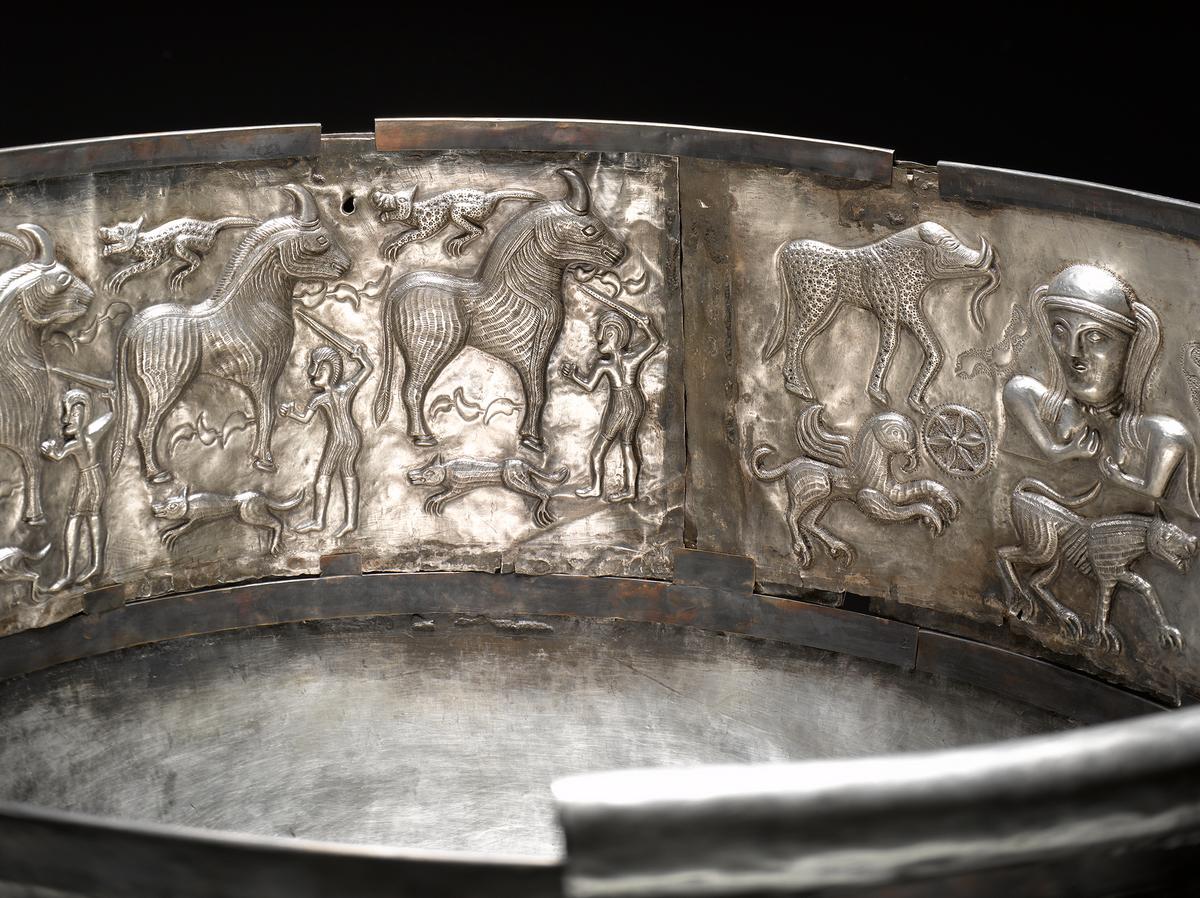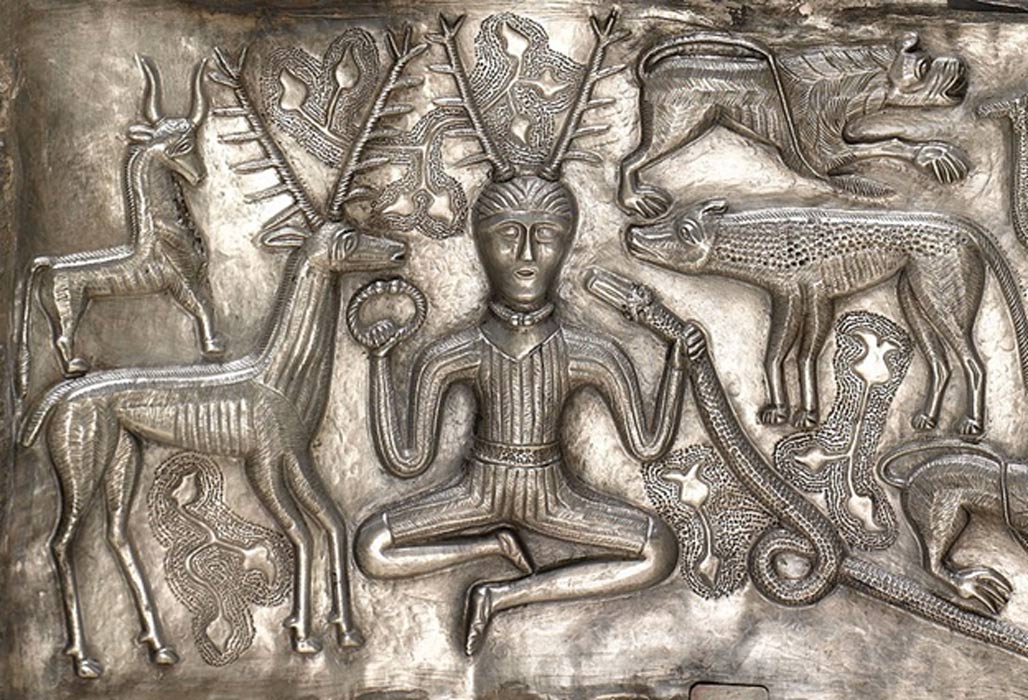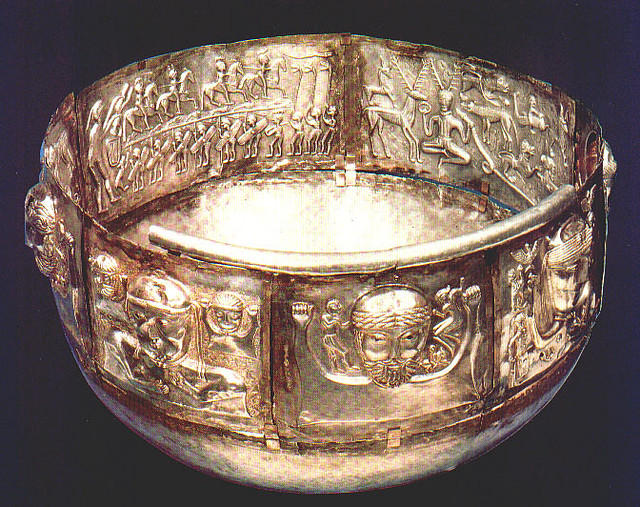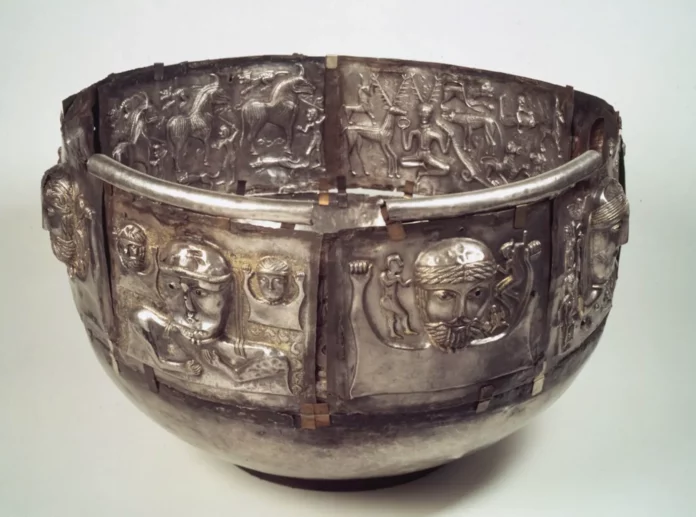The Gundestrup Cauldron stands as one of the most intriguing and magnificent archaeological discoveries connected to Celtic culture. This extraordinary vessel, crafted from richly decorated silver plates, has captivated historians and archaeologists alike with its elaborate design and enigmatic origins. Despite its clear connections to Celtic mythology, the place where it was unearthed, Northern Jutland in Denmark, was never inhabited by the Celts, raising questions about its journey and purpose.
A Mysterious Artifact with Celtic Connections
The Gundestrup Cauldron is widely regarded as the largest single silver object from the La Tène era, a period in which Celtic culture flourished across much of Europe, from about 500 BC until the Roman conquest in the 1st century BC. The cauldron, weighing nearly 9 kilograms, is an impressive artifact measuring 42 cm in height and 69 cm in diameter. It consists of 14 silver plates assembled into a single vessel, each plate adorned with intricate reliefs depicting scenes that seem to draw from Celtic mythology.

Among these scenes, the most striking image is that of Cernunnos, the horned god of Celtic tradition. The cauldron portrays him seated, wearing a close-fitting tunic and trousers, with a royal torc around his neck and a ram-headed snake in one hand. This depiction of Cernunnos, along with other mythological scenes, suggests a strong Celtic influence, even though the artifact’s origin remains uncertain.
The Origins of the Gundestrup Cauldron
The place where the Gundestrup Cauldron was discovered—a bog in Gundestrup, Northern Jutland—has never been linked to Celtic habitation. This has led to much speculation about the cauldron’s origins. Was it manufactured in Central Europe, a region more closely associated with Celtic culture? Or was it the result of cultural interactions between the Thracians and Celts in what is now Bulgaria?

While the silverworking of the cauldron is not typically Celtic in style, some aspects of the imagery and craftsmanship suggest considerable Celtic influence. Analyses of the silver and tin used in the cauldron indicate that the metals originated from regions in Europe commonly associated with Celtic habitation. This has led to theories that the cauldron may have been produced by Thracian smiths at the request of a Celtic tribe, possibly in Gaul.

Theories and Debates
One of the most compelling theories about the Gundestrup Cauldron’s presence in Denmark is that it was looted and transported there by the Cimbri, a Germanic tribe. Ancient historians such as Strabo and Tacitus have identified the Cimbri with a group living in Jutland, although strong evidence for this connection is lacking.

The commonly accepted theory that the cauldron was manufactured in Thracian southeast Europe has also been questioned in recent years. While silversmithing was indeed a specialty of the Thracian region, this skill was developed in the 5th and 4th centuries BC—much earlier than the proposed date for the cauldron’s creation in the mid-2nd century BC.
Conclusion
Despite the ongoing debates about its origins and the influences behind its rich mythological imagery, the Gundestrup Cauldron remains a fascinating and important ritual object. Its discovery in a region far from its potential place of manufacture only adds to its mystery, making it one of the most enigmatic artifacts connected to Celtic culture. Whether produced by Thracian smiths or Celtic artisans, the Gundestrup Cauldron continues to be a symbol of the cultural exchanges and influences that shaped ancient Europe.
